To make truly creative things is not difficult at all, a striking example of this is weaving from newspaper tubes. Of course, it takes quite a lot of time to make them, but you are guaranteed to become the owner of truly original and exclusive crafts. Let us dwell on the features of this technique.
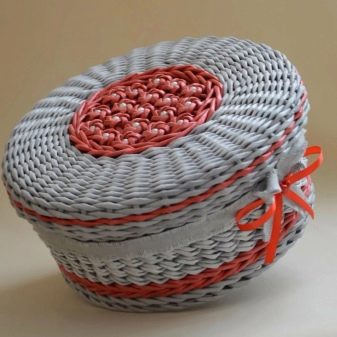
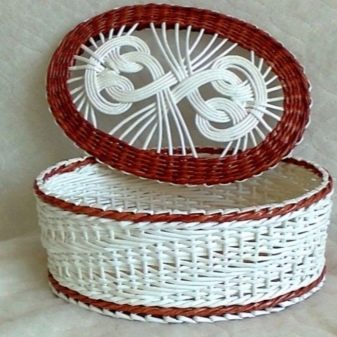
Preparation
Weaving from paper tubes is also called plywood. Before you get started, should prepare blanks - the straws themselves, which will be the main material. You can wind them up from glossy magazines, newspapers and any advertising booklets. To do this, you will need paper directly, as well as glue stick or PVA. In addition, stock up on a piece of dense wire, a wooden skewer or a long knitting needle, and their diameter should be approximately 1.5-2 mm.
To form the tubes, the paper must be cut into pieces of the required size, so that the aspect ratio is 1 to 3 or 1 to 4. For example, these can be pieces 27x9 or 35x10.
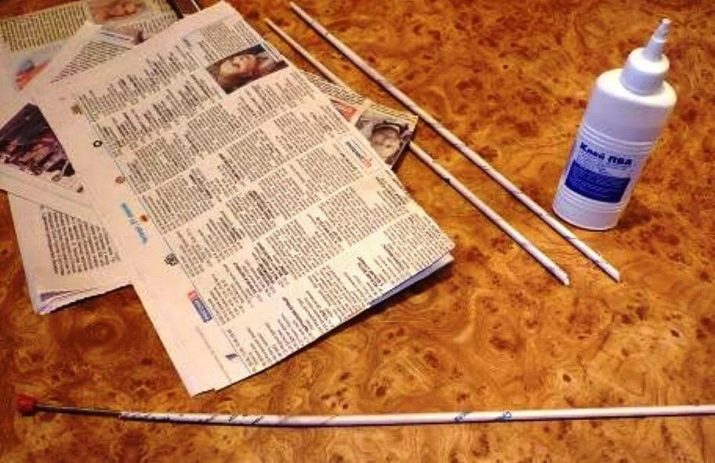
Next, the paper strip is fixed at the edge of the knitting needle and begin to wrap. To achieve the necessary strength of the straw, the paper is laid in relation to the core at an angle of 45 degrees - in this case it will turn out to be sufficiently strong, but at the same time it can easily bend.
At the end of the work, the needle is removed. If the tube is not particularly long, then you have to make a few blanks. If you performed all the steps correctly, then one end of the tube will be thin, and the other more thickened and hollow inside. If you want to fasten two tubes together - drip a little glue into the thick part and fix the second workpiece in it with the thin side and wait until the composition is bonded.
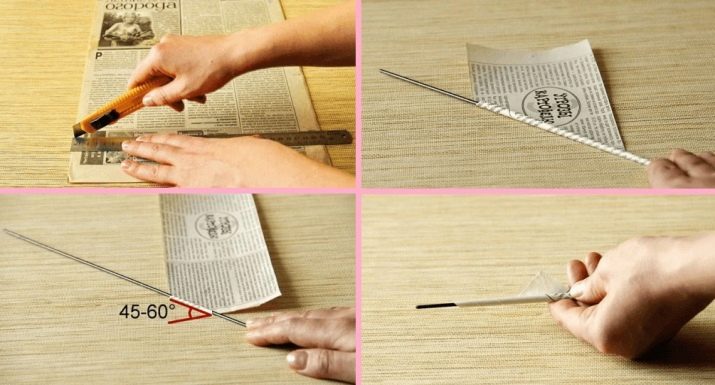
Sometimes, to perform the simplest weaving, straws are additionally rolled with a rolling pin, as a result they acquire a flat shape - in this form it will be much easier to work with blanks, that is, skip between rows.
In order for the tube to bend better, it should be moistened with water from the spray gun before work.
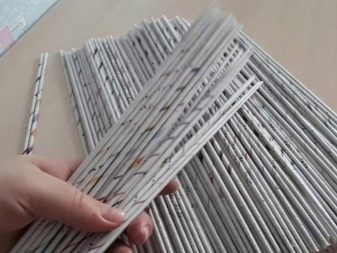
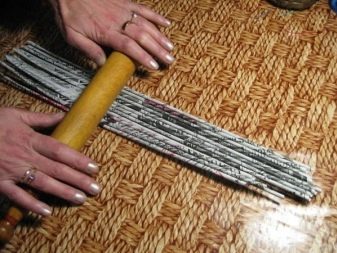
Step-by-step instruction
For most crafts based on plywood weaving, the bottom is primarily formed, it can be round, semicircular, triangular, square or rectangular. There are two main options. The first is to make it cardboard, making racks at the edges. This is a fairly simple and affordable method, which is optimal for those who are just taking their first steps in weaving, since braiding the walls alone is much easier than giving the necessary shape to the bottom.

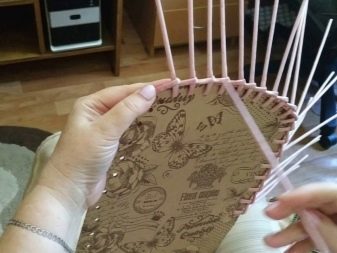
The second option is more complex, it offers weaving bottoms from newspaper tubes. This will require long workpieces made up of two or three workpieces. There are many ways of weaving, but the principle in all cases is the same - straws are woven together in one or small groups, forming a single center. After that, the individual base is braided with individual "lozins", adding size and giving the desired shape.
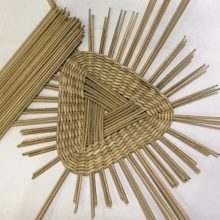
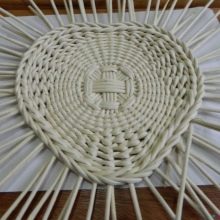
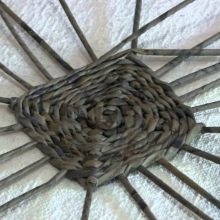
If you give the bottom a round or oval shape, it is best to cross several straws nested in one another. For example, take 5 blanks and weave them together so that the bottom is not too voluminous - it can be crushed a little (this is done with a rolling pin or an ordinary bottle, rolled 3-4 times). To facilitate further work, the intersection is coated with glue.
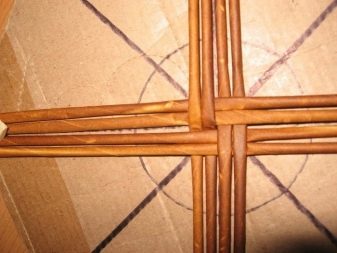
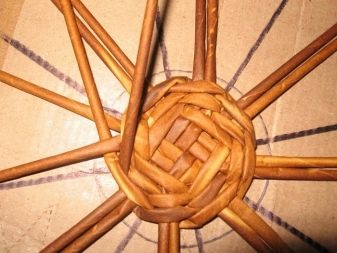
Then you need to take a paper straw and begin strapping the bottom, during the work the straw is passed through 3 tubes - in this way two rows are formed. Then they knit a few more rows, passing a straw through two straws, and weave the last 2-3 rows, already passing it through only one straw.
We draw attention to the fact that during the weaving of the duct, the base should be spread at an equal distance, initially it goes that way, but it is important to constantly monitor that this proportion is maintained.
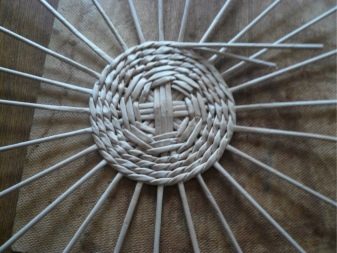
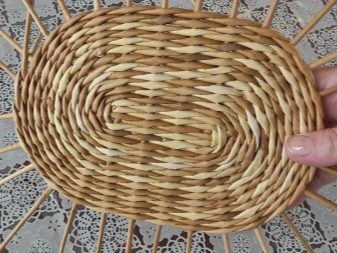
When passing to the walls of the tube, they cross over - this allows you to make products more dense and stable, and the transition, respectively, more reliable. For wall expansion, working straws are most often taken - the same ones that were used to form the bottom.
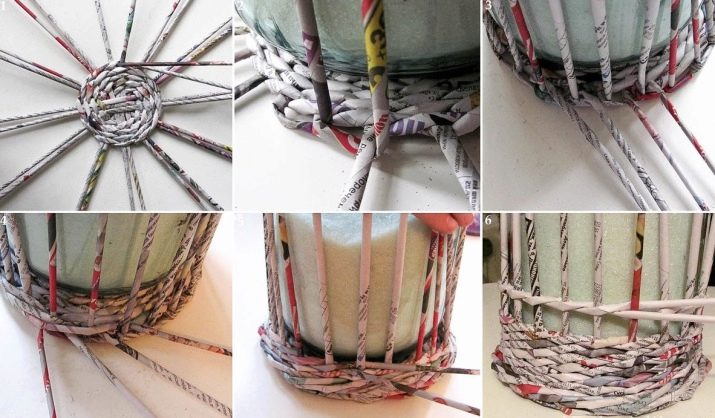
To make the finished product look aesthetically pleasing and neat, at the final stage of work, it is necessary to remove all working tubes, as well as form an edge. First, the working tubes are fixed, most often they are closed directly in the weave - in the place of the nearest binding. To perform this operation, an elongated skewer or an ordinary knitting needle will be required. Having retreated 2-3 down, the skewer is inserted so that it comes out close to the working tube.
Next, the straw should be put on the skewer and bent the entire structure, and then carefully withdraw in the place where the skewer was originally introduced. After that, the straws are cut as close to weaving as possible and all the manipulations with the rest of the working elements are repeated.
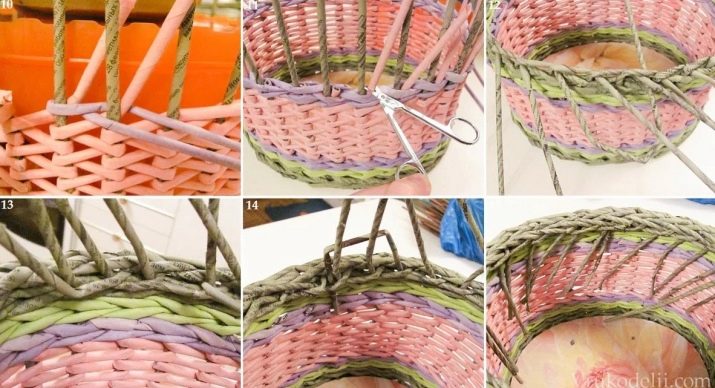
This method is considered one of the most reliable and at the same time simple, it allows you to firmly fix the working tubes, so that they are introduced into the weaving and remain clamped.
At the last stage, they begin to design the edge. There are several ways, it will be easiest to do the same as with the workers, but bend them inside the finished product.
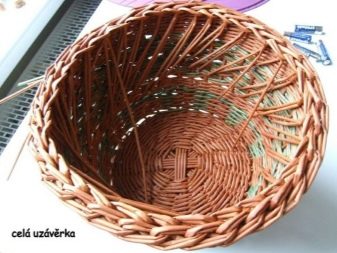

Recommendations
Many users do not like the natural color of newsprint, they prefer that the letters are not visible, in which case the wound straws should be toned.To do this, take a stain or acrylic paint - both formulations adhere tightly and interact well with a paper base of all kinds, do not spread and dry out very quickly. The blanks covered with acrylic varnish with the addition of colored pigment look beautiful - in addition to the aesthetic appearance, these blanks become much more resistant to moisture.
Of course, painting each tube with a brush is too long and time-consuming, because it is best to take a large tray, pour enamel into it and lower the finished elements. After staining, the workpieces are placed on a thin layer of plastic film for drying.
Tip: before you start paper weaving, be sure to study the master classes - you can find them on the Internet, where they are freely available. Experienced needlewomen in them tell how to gradually create stylish home decor items from magazine tubes - this will greatly facilitate your further work.
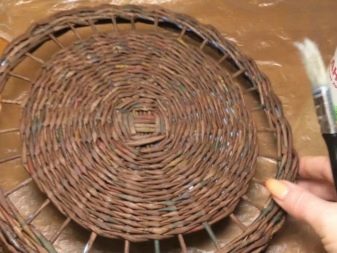
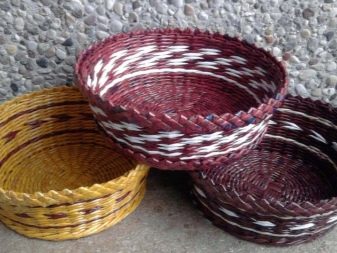
Next, see a workshop on weaving round bottom from newspaper tubes.










